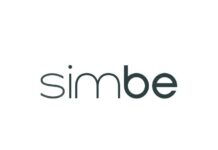 Launching a business surrounding a product is different than starting any other sort of company. You don’t just have to sell yourself, your idea, and your process; you have to make the product work, in everything from the viability of its creation to how it appeals to consumers. With a comprehensive and detail-oriented approach though, you can make it all work. And if you’re looking to start a company like this in the near future, or even if you’re simply selling a single product independently, considering these steps early will help you to do so.
Launching a business surrounding a product is different than starting any other sort of company. You don’t just have to sell yourself, your idea, and your process; you have to make the product work, in everything from the viability of its creation to how it appeals to consumers. With a comprehensive and detail-oriented approach though, you can make it all work. And if you’re looking to start a company like this in the near future, or even if you’re simply selling a single product independently, considering these steps early will help you to do so.
Set Up A Robust Email Marketing Effort
You may have seen our guide to setting up a first email marketing campaign in a previous article published in early December of last year. It discussed the importance of determining your goals, choosing the correct platform (MailChimp, Mailify, and GetResponse being a few strong options), drafting email copy, building and segmenting your list, adding copy and art to your template, and a few more steps. Indeed, these steps can comprise a very strong email marketing effort.
The reason this is an essential early step in creating your business around whatever product you’re selling is that it more or less represents the beginning of your network. With a product-oriented business, a portion of your success will always come down to word of mouth. And if you can first get your own network aware of and excited about your product, you’ll be on the path toward making it more widely relevant.
Research Your Competition
Ideally, your first round of research in this process should be conducted with the goal of determining if you’re as unique as you think you are. Undoubtedly there will be products and companies that are at least somewhat like yours. But try to make sure you can reasonably stand out well enough to gain a share of the market before you even get started.
That said, researching your competition can and should go a great deal further than an early exploration of the market. Inc. published an excellent guide for how to research competition, featuring tips from various small business owners in different fields, and included ideas like setting up alerts to track news from similar companies, following competitors on social media, and even attending conferences relevant to your market. Steps like these should be taken early and often as you look to compete in your category.
Look Into 3D Printing
Particularly if you’re just starting a business, 3D printing might seem to be an advanced, expensive process not to be considered yet. It’s true that high-end printing of this kind can still be somewhat expensive, but it’s also a production method that can offer an attractive range of benefits for any startup that revolves around a product.
First and foremost is efficiency. When you’re starting out with an idea, the concept of actually turning that idea into a physical product can seem like a significant barrier. You might anticipate waiting weeks for a prototype, or else trying to design a crude early version on your own. Per Fictiv, however, 3D printing manufacturers can now deliver printed parts in as little as 24 hours. Various technologies can direct the process (fused deposition modeling being a common option), and different materials can be used, but regardless a prototype can be created, functionally, in no time.
Beyond basic efficiency, 3D printing can also allow you to experiment early, such that you can try a few prototypes to get your design right. It reduces material waste and in some cases your total manufacturing cost. And it takes the manufacturing process out of your hands to allow you to focus on the business you’re creating.
Know Your Financing Options
In all likelihood, you won’t be looking to design a process and start a business without having funding in place to begin with. Whether it’s your own money, a collection of investments from family and friends, or even a bank loan, you’ll need that capital to get the ball rolling. What we’re suggesting here though is that you should also have some financing options in mind for future needs. It’s nearly inevitable that at some point you’ll need an influx of cash, whether to make more of your product, enhance your marketing effort, hire employees, or whatever else it may be. You’ll be better to handle these needs when they arise if you’ve already done your brainstorming and come up with a few options (perhaps various types of loans, people you know who might help, a way to redirect supplemental income toward the business, etc.).
Set Up Strong Digital Visuals
Having a strong digital presence with engaging visuals is important for virtually any kind of business these days. Visuals simply engage more effectively than text, such that even the dullest or most text-oriented business ought to find a way to include some photos, illustrations, or graphics to share online and via social (not to mention in those email campaigns!). However, visuals are all the more important when you need to showcase and/or explain a product.
Speaking to this point, J2 Store posted a helpful article back in 2016. It described various ways to create a “stellar product showcase” in an online store, touching on the important of a minimalistic layout, visible testimonials from customers, and great images of the product itself. These may sound like obvious components to include, but getting them all on the page in an attractive way that truly highlights the product is easier said than done. Nevertheless this too should be a serious focal point as you look to set up your business and sell your product.











